Physical Address
304 North Cardinal St.
Dorchester Center, MA 02124
Physical Address
304 North Cardinal St.
Dorchester Center, MA 02124
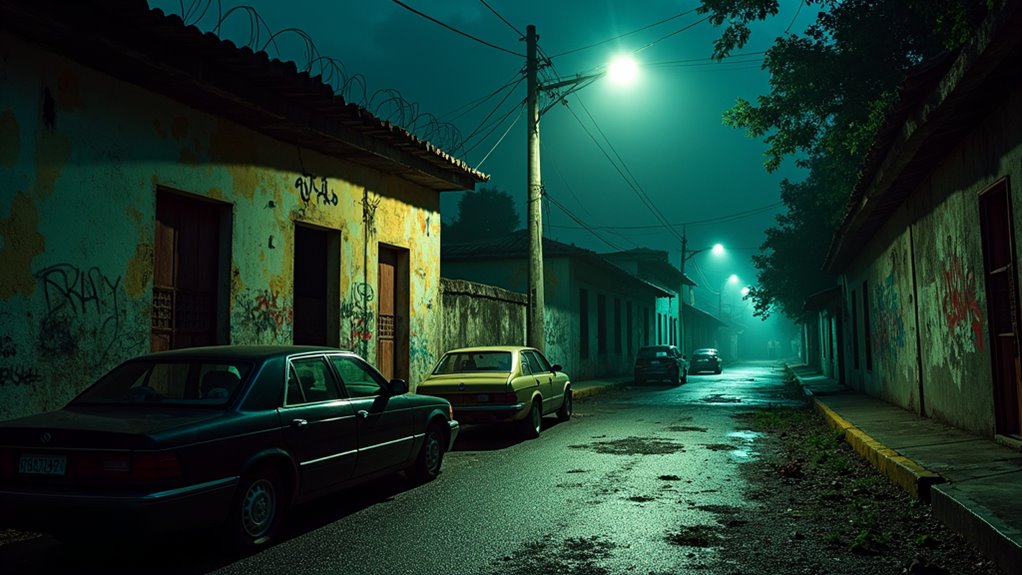
Shocking hot spots in Colombia demand caution—discover which nine cities locals recommend tourists avoid at all costs.
Colombia’s most dangerous areas include Cali (the murder capital), Bogotá (high robbery rates), the Venezuela-Ecuador borders, Comuna 13 in Medellín, Buenaventura and Tumaco (gang and drug trafficking hubs), Cartagena’s non-tourist areas, Cúcuta (border crime hotspot), and Arauca (conflict zone). You’ll need extreme caution in these places—avoid displaying valuables, use reliable transportation, and travel in groups. The details below will help you navigate these risky regions safely.
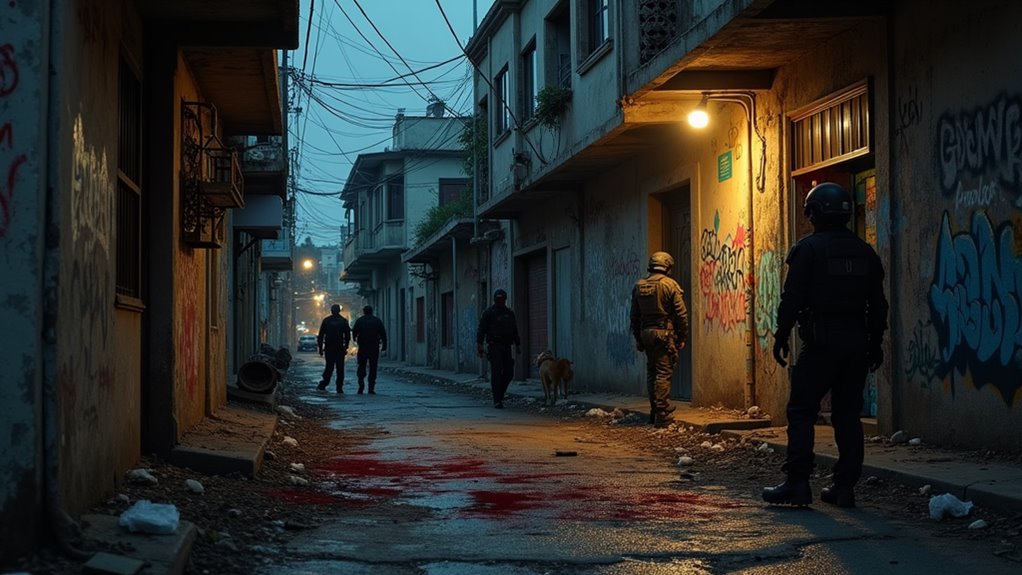
Over 1,700 assassins reportedly work for various criminal groups, including neo-paramilitary organizations like Los Rastrojos and the Usuga Clan.
While tourist areas are relatively safer, you should still practice extreme caution. This is especially important as Colombia shares similar crime patterns with South African cities which dominate global crime rankings.
If you visit, remember the local saying “dar papaya”—don’t make yourself an easy target. Keep valuables hidden, avoid walking alone at night, use reliable transportation, and travel in groups whenever possible, especially in unfamiliar neighborhoods.
While Bogotá stands as Colombia’s massive capital and cultural center, it also grapples with troubling crime statistics that visitors need to understand. The city has seen a 78% increase in robberies from 2020 to 2023, with phone and bag snatching particularly common. The pattern follows the national trend showing a 13.37% increase in crime rates from 2020 to 2021 after previous years of decline.
Despite these concerns, Bogotá remains one of South America’s safer large urban areas, with a lower violent crime rate than many U.S. cities. The homicide rate reached a historic low of 12.92 per 100,000 in 2022.
When visiting, remain vigilant in public places, avoid displaying valuables, and use secure transportation. Though crime has increased post-pandemic, the city is generally safer than Medellín and Cali.
Still, with a crime index of 66.4, you’ll need to exercise caution throughout your stay.
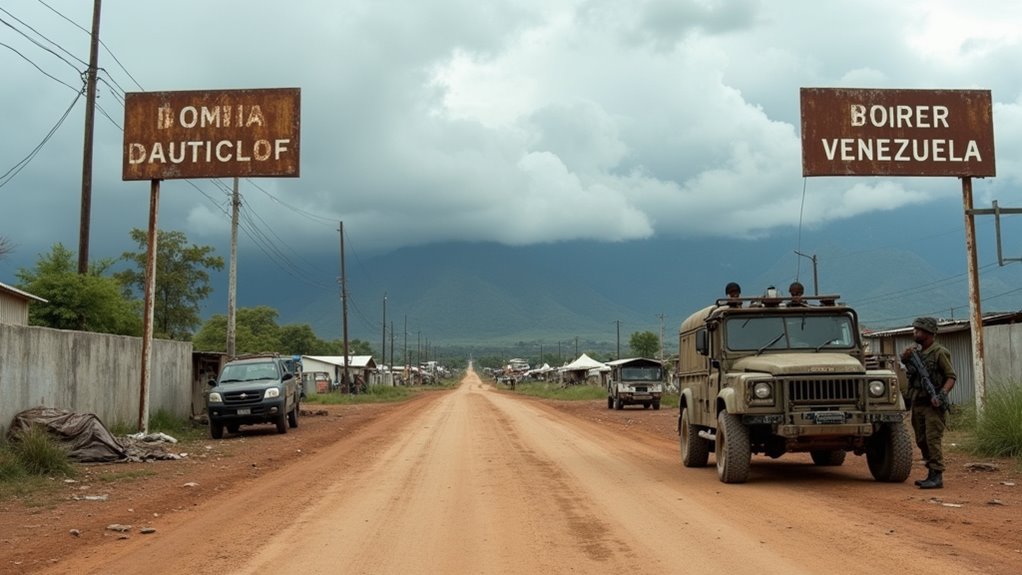
Colombia’s border regions with Venezuela and Ecuador rank among the country’s most perilous areas, where violence, displacement, and illicit activities have created what experts call the largest humanitarian crisis in the region in three decades. If you’re considering travel near these frontiers, you need to understand the severity of the situation.
The government has declared emergency measures, but security remains highly volatile in these regions. Health facilities in border communities are severely overwhelmed by the surge of displaced persons fleeing violence, creating additional risks for travelers and residents alike.
Nestled on Medellín’s western hillsides, Comuna 13 represents one of Colombia’s most complex urban transformations, where a history of extreme violence continues to cast shadows despite remarkable progress.
Once a battleground for paramilitaries, guerrillas, and gangs, this densely populated neighborhood of under 250,000 residents served as a strategic drug trafficking corridor.
While homicide rates have dropped considerably, local gang activity persists alongside socioeconomic challenges.
You’ll now find vibrant street art tours and cultural initiatives reclaiming public spaces, but don’t be fooled by its Instagram popularity.
Though safer than during its darkest days, Comuna 13 still requires caution, especially after dark. The area falls within San Javier district, which has experienced significant five-year homicide declines according to recent security assessments.
If you visit, stick to guided tours, avoid displaying valuables, and respect local boundaries—this community is still healing from decades of conflict.
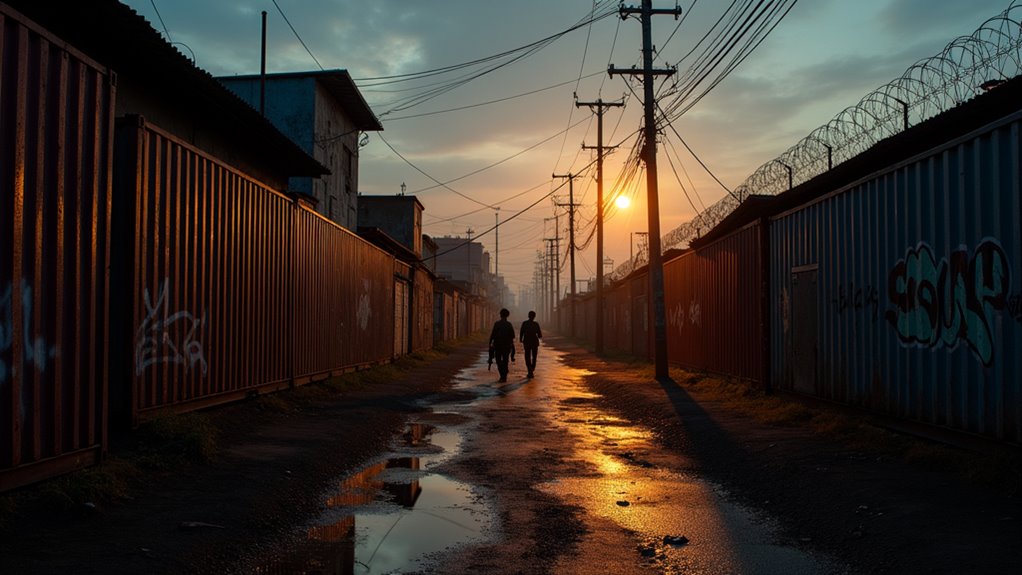
Buenaventura stands as a stark paradox in Colombia’s landscape—an essential port city generating immense wealth while its residents endure crushing poverty and relentless violence.
Despite handling 60% of Colombia’s international trade, approximately 60% of locals live in extreme poverty, lacking basic services like clean water.
The city’s danger stems from:
The recent ceasefire between gangs, extending until May, has contributed to some reduction in homicides though systemic challenges persist.
Despite community initiatives like Puente Nayero Humanitarian Space offering refuge, the government’s increased military presence has struggled to curb the pervasive violence.
Located on Colombia’s southwest Pacific coast, Tumaco has earned its reputation as one of the country’s most dangerous regions, where violence and narcotrafficking have become deeply entrenched in daily life.
Tumaco’s coastal location has transformed it into a violent battleground where drug trade and bloodshed define everyday existence.
As Colombia’s second-largest coca producer with over 8,500 hectares of cultivation, Tumaco serves as a strategic launching point for drug shipments. Its complex network of rivers and Pacific access creates the perfect storm for trafficking organizations.
You’ll find a heavy military presence here, but armed groups continue to battle for control of lucrative trade routes. Recent negotiations with FARC-Second Marquetalia in Tumaco and a non-aggression pact have helped lower violence levels in the region.
The local economy remains deeply dependent on coca production, with many community improvements ironically funded through drug money.
Despite international cooperation efforts, including US-backed initiatives and the multinational Orion strategy, Tumaco’s challenging geography continues to hamper effective security control and economic development.
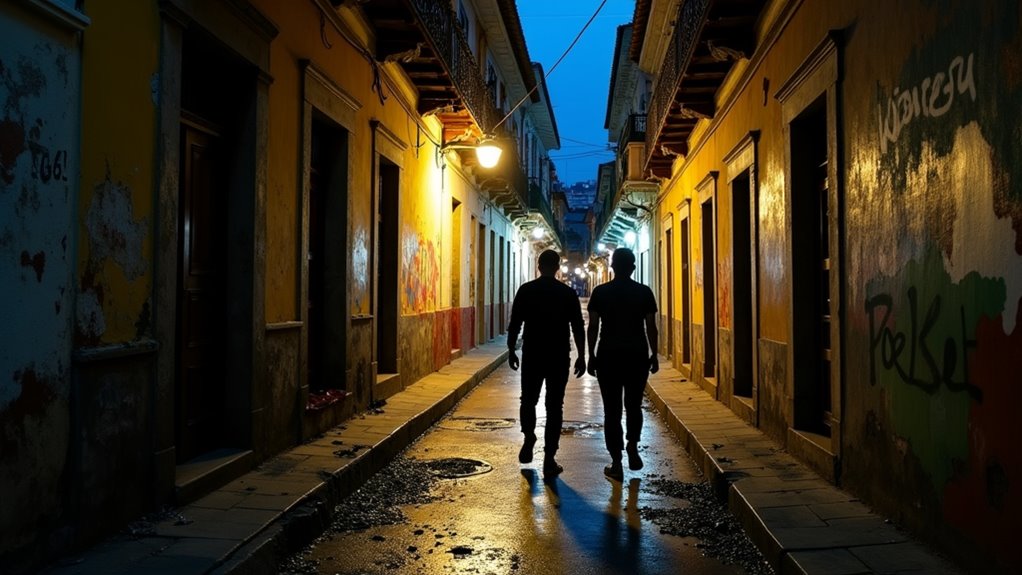
While Cartagena’s colonial architecture and vibrant streets draw millions of travelers annually, the city harbors significant dangers beyond its picturesque facades. The contrast between the heavily policed tourist zones and surrounding neighborhoods is stark, with areas like El Paraiso and Sector La Magdalena reporting higher crime rates. Despite Colombia experiencing overall crime decreases of 10.9% from 2022 to 2023, certain tourist districts still face significant safety challenges.
When visiting, stick to well-lit areas, use licensed transportation, and never accept drinks from strangers.
Situated at Colombia’s eastern border with Venezuela, Cúcuta has become one of the country’s most dangerous cities due to its position as a hotspot for criminal activity. You’ll find a complex web of cross-border smuggling, trafficking operations, and territorial disputes between armed groups that create a volatile security situation.
The U.S. Department of State explicitly warns against travel to this border region because of kidnapping risks and armed conflict. The recent ELN offensive in Norte de Santander’s Catatumbo region, which borders Cúcuta, resulted in at least 52 confirmed deaths and massive displacement of civilians. If you’re considering visiting, be aware that local communities live under constant threat from extortion schemes and violence perpetrated by organized crime syndicates.
The city’s economic instability further fuels criminal activity, with limited job opportunities pushing some residents toward illicit income sources. Law enforcement struggles to maintain control amid these challenging circumstances.
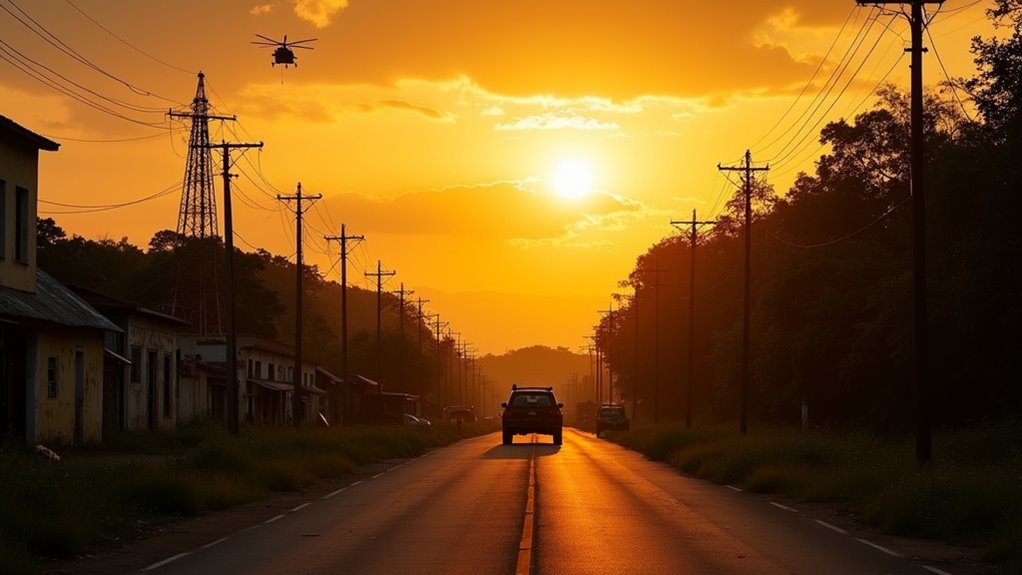
Arauca represents one of Colombia’s most perilous regions, where oil wealth has fueled decades of violent conflict along the northeastern Venezuelan border. You’ll encounter active confrontations between ELN guerrillas and FARC dissidents who’ve recently broken their non-aggression pacts, creating a volatile security situation for civilians and travelers alike. Authorities recommend travelers exercise high vigilance when passing through any part of this region, even for short periods.
Colombia offers breathtaking beauty alongside sobering danger. You’ll find pristine beaches and violent hotspots, warm hospitality and criminal enterprises. Stay vigilant in cities like Cali and Bogotá, while completely avoiding border regions and gang territories. Research thoroughly before visiting and trust local advice. With proper precautions, you can experience Colombia’s diverse culture safely—just remember that situational awareness is your best companion in a country of striking contrasts.